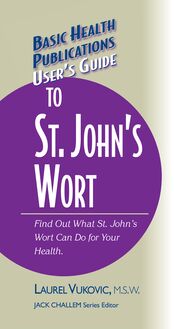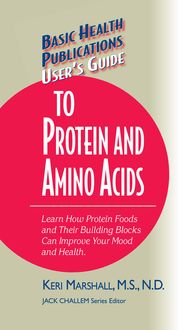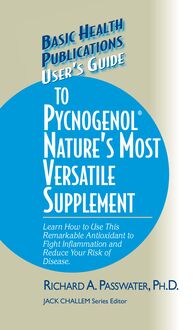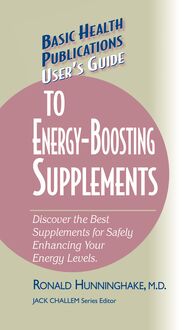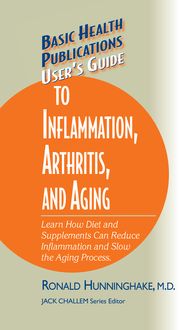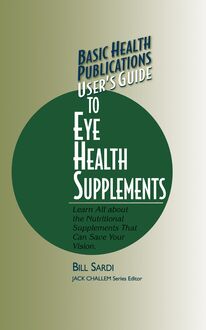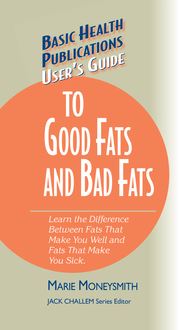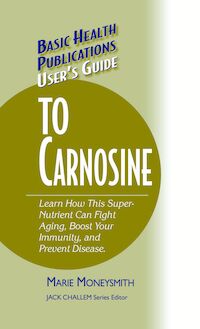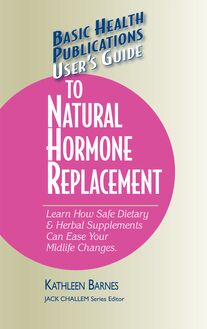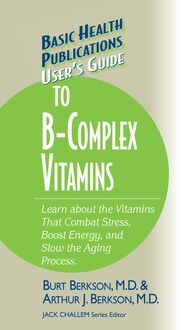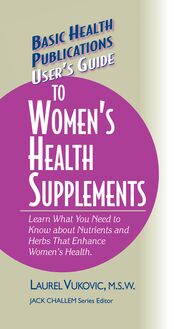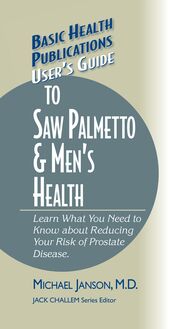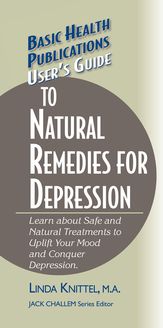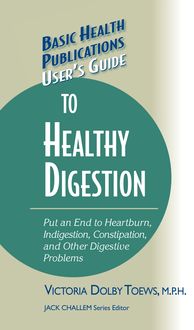User's Guide to Energy-Boosting Supplements , livre ebook
45
pages
English
Ebooks
2006
Vous pourrez modifier la taille du texte de cet ouvrage
Obtenez un accès à la bibliothèque pour le consulter en ligne En savoir plus
Découvre YouScribe en t'inscrivant gratuitement
Découvre YouScribe en t'inscrivant gratuitement
45
pages
English
Ebooks
2006
Vous pourrez modifier la taille du texte de cet ouvrage
Obtenez un accès à la bibliothèque pour le consulter en ligne En savoir plus
Publié par
Date de parution
01 octobre 2006
Nombre de lectures
1
EAN13
9781591206965
Langue
English
Poids de l'ouvrage
1 Mo
Publié par
Date de parution
01 octobre 2006
Nombre de lectures
1
EAN13
9781591206965
Langue
English
Poids de l'ouvrage
1 Mo
The information contained in this book is based upon the research and personal and professional experiences of the authors. It is not intended as a substitute for consulting with your physician or other healthcare provider. Any attempt to diagnose and treat an illness should be done under the direction of a healthcare professional.
The publisher does not advocate the use of any particular healthcare protocol but believes the information in this book should be available to the public. The publisher and authors are not responsible for any adverse effects or consequences resulting from the use of the suggestions, preparations, or procedures discussed in this book. Should the reader have any questions concerning the appropriateness of any procedures or preparations mentioned, the authors and the publisher strongly suggest consulting a professional healthcare advisor.
Series Editor: Jack Challem
Editor: Susan Andrews
Typesetter: Gary A. Rosenberg
Series Cover Designer: Mike Stromberg
Basic Health Publications User’s Guides are
published by Basic Health Publications, Inc.
28812 Top of the World Drive
Laguna Beach, CA 92651
949-715-7327
Copyright © 2006 by Ronald Hunninghake, M.D., and Melissa Lynn Block
ISBN-13: 978-1-59120-696-5
ISBN-10: 1-59120-176-4
All rights reserved. No part of this publication may be reproduced, stored in a retrieval system, or transmitted, in any form or by any means, electronic, mechanical, photocopying, recording, or otherwise, without the prior written consent of the copyright owner.
Printed in the United States of America
10 9 8 7 6 5 4 3 2 1
CONTENTS
Introduction
1. How Your Body Makes Energy
2. High-Energy Eating Habits
3. Cell Energy: Coenzyme Q10
4. Safe Energy: Alpha-Lipoic Acid
5. Slow Energy: Carnitine and Acetyl-L-Carnitine
6. Quick Energy: Ribose and Creatine
7. Reserve Energy: Rhodiola and Ginseng
8. High-Energy Habits: Exercise and Stress Management
Conclusion
Selected References
Other Books and Resources
I NTRODUCTION
I , Ronald Hunninghake, have a confession to make: I’m a doctor, writing a book about energy . . . and I used to suffer terribly from fatigue! I did not have chronic fatigue syndrome, I was not depressed, and I had no serious illnesses, such as diabetes. I enjoyed my work. My wife and family were wonderful. I slept well (though probably not enough). I walked every day and kept my weight down. In spite of all this, I was pooped!
I could make it through the day all right, but only after a cappuccino jump-start in the morning, a noon nap, and several diet colas in the afternoon. Even then, I would typically experience a “brown-out” between two and three o’clock each day—my eyes heavy, my facial expression drooping, and my attention drifting into semiconscious drowsiness. It wasn’t unusual for a patient to jolt me back to reality with a sharp “Doctor . . . doctor! Are you okay?”
No, I wasn’t okay. Something was wrong that I didn’t see and couldn’t understand. I was so immersed in my fatigue, I made the mistake of assuming everyone felt tired. In a sense, I had “adapted” to my fatigue. Looking back, I now know that I was very low in energy, and I didn’t know how to correct the situation.
Though not overweight, I was often hungry, and usually for the wrong things. If there were something sugary that I could get my hands on, I would go for that. I knew I needed more energy and was looking for some way to “infuse” it into my body. Quick calories gave me a quick burst of energy, like a roller coaster making it to the top of a steep climb. Then, my blood sugar would plummet, and I would often feel things going fuzzy, as though I were going to black out.
In a very real sense, these were moments when I had “run out of gas.” Filling the tank over and over again with sugary foods wasn’t working. Indeed, for many of my patients, this approach to fatigue was leading to weight gain in their abdominal area. This central obesity—coupled with a tendency for high blood pressure, high cholesterol and blood lipids, and borderline blood sugar readings—form an ominous medical constellation that over a third of Americans now face: Syndrome X, also known as “metabolic syndrome.” This syndrome leads directly to the fastest-growing disease in America today: type 2 diabetes. The onset of type 2 diabetes is often heralded by severe fatigue.
In fact, many medical conditions are associated with fatigue. That’s why people often say they are “sick and tired” of frustrating life situations. They are definitely tired, and often sick. And why does tiredness often precede diabetes and many other serious illnesses? It’s because the key cellular nutrients needed to run the biochemistry of energy production are depleted.
Could it be that overeating is an attempt to get these needed nutrients? When the basic understanding of cellular energy production is missing, humans will forage blindly in their attempt to fill in this gap. Obesity (another major cause of fatigue and illness) may be the result of a misdirected attempt to correct cellular malnutrition.
Feeding the Fire
The purpose of this book is to introduce you to a basic understanding of bioenergetics. “Bio” is life. “Energetics” is energy. Bioenergetics is the study of the energy of life. This is basic biochemistry 101. Unfortunately, biochemistry is usually locked up in textbooks, where sleepy-eyed students study it for the purpose of passing a test. Knowing how energy is created at the cellular level and how to feed those processes helps us pass the most important test: how we live our day-to-day lives.
Dr. Hugh Riordan, the founder of the center where I have practiced for the past two decades, offered this definition of health: Health is having the reserves to do what you need to do and want to do with energy and enthusiasm. This is a functional definition. Health is a doing thing. One cannot do without energy! (And enthusiasm is energy with an attitude!) The scientist who discovered vitamin C, Albert Szent-Györgyi, referred to energy as the “currency” of life. Without energy, you have nothing to spend!
I began this introduction by admitting my helplessness in the face of unrelenting fatigue. That was years ago, when I was “energy-ignorant.” Through a better understanding of bioenergetics, I was able to overcome my own tiredness and lethargy. I now know that there are ways to revive and enliven the bioenergetic system. I know, because I have helped many chronically tired patients to regain their energy and to become “colearners” in the process.
Dr. Riordan coined this term. Colearners are patients who take an active role in the discovery of the actual underlying causes of their illness. Colearners are partners with health professionals. I invite you to become a colearner with my coauthor, Melissa Block, and me. We wrote this book to help you conquer fatigue and enjoy a more energetic life.
As a colearner, you will better understand how cellular energy—a kind of “cellular fire”—is created and sustained. Like any fire, if it is fed poorly selected fuel (see Chapter 2 ), it will become weak. If the kindling is wet (see Chapter 3 ) it will not ignite properly. If care is not taken to tend to the sparks flying off the blaze (see Chapter 4 ), damage to the surrounding cellular environment can ensue. By knowing which kinds of wood to use, you can make your fire burn in a slower and more sustained fashion (see Chapter 5 ) or faster and hotter (see Chapter 6 ). There are ways to stoke your fire’s reserves as well (see Chapter 7 ).
We use the analogy of building a fire very purposefully here. Those of you who camp or own a wood fireplace know that building a fire is both a skill and an art form! Every fire is unique, but predictable. If you take care and make good choices, your fire will rise up into a wondrous thing of beauty, bringing light, warmth, and utility to your experience. If you approach your fire in a haphazard fashion, or are ignorant of what constitutes a healthy fire, you will be disappointed . . . and probably end up with a lot of smoke!
Like this fire, cellular energy is your creation. If you take it for granted and ignore the basics of bioenergetics, then you can predict the outcome you will experience: fatigue!
Should you take ownership of your cellular fire, feed it properly, tend to it carefully, stoke it, and learn the basics of maintaining it, you will be rewarded with an experience of great personal empowerment. You will overcome chronic fatigue and replace it with a sustainable experience of energy and hope.
This book will be your cellular fire-building guide!
CHAPTER 1
H OW Y OUR B ODY M AKES E NERGY
L ong ago, early humans figured out how to make fire. This knowledge gave us greater adaptability and a wider range of choices. Once limited to temperate climates, humans were capable of migrating to colder regions of the earth. Fire meant cooked food, warmer shelters, and greater safety from wild animals.
In many ways, the discovery of fire was the beginning of civilization. Fire became the center of tribal culture. Fire keeping may have been the first human profession! Fire metaphors are tightly woven into our language: hearts on fire with passion, the fire in the belly, the burning desire for knowledge, fear of getting “burned.”
Fire remains a dramatic force in human life today. Forest fires and fires in homes and businesses can bring great destruction and fear. But what could be more comforting than a fire in the fireplace or a campfire on a cool night?
Like most natural forces, fire is both good and bad. This book is about another kind of natural fire that can be both good and bad. This is an inner, unseen fire, burning every second of your life, the source of all life and all biological activity. Without it, you would be extinguished.
This fire takes place within cells, the basis of all life on this planet. Cells breathe, metabolize, live, grow, divide,
